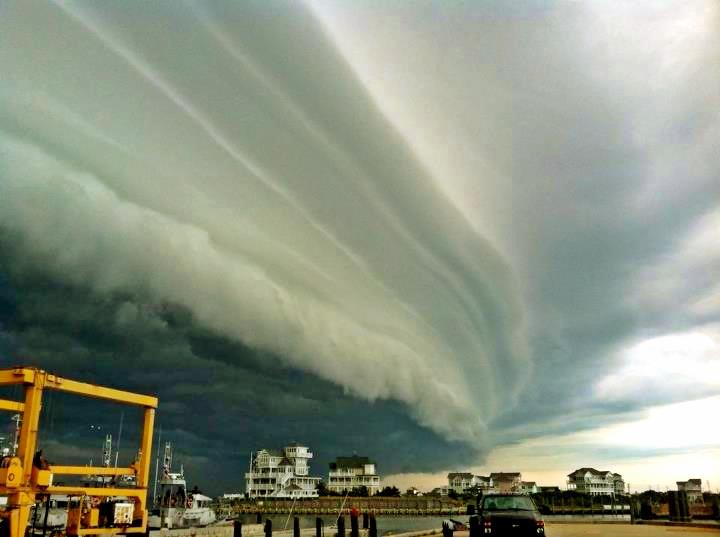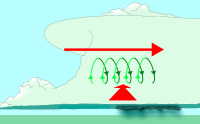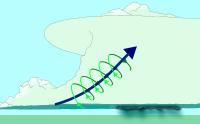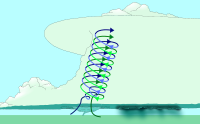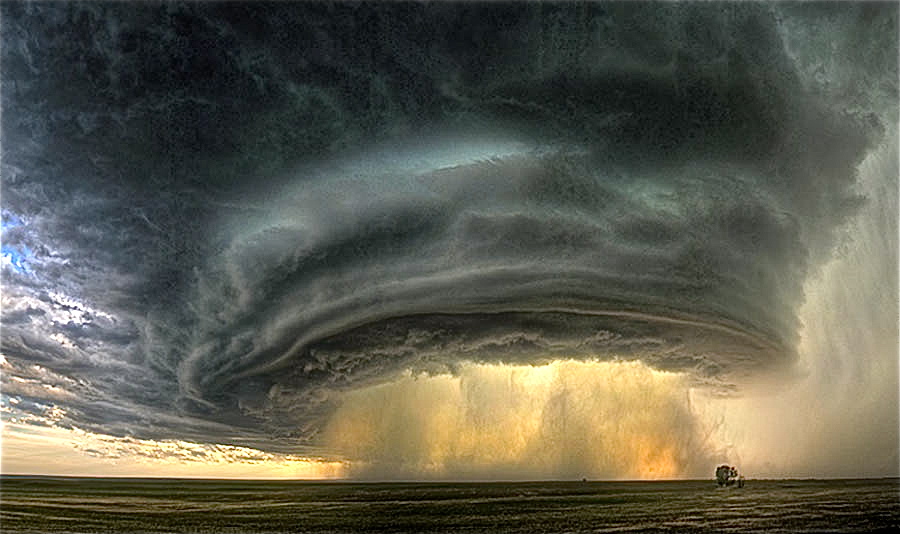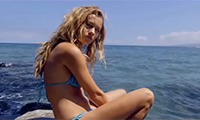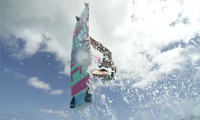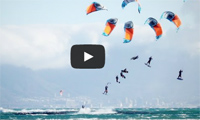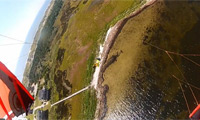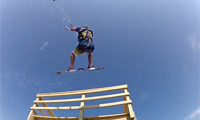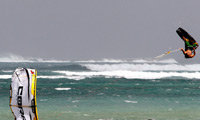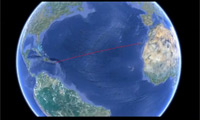It´s been a while since someone uploaded a decent video on vimeo. So I´m happy that some Victoria kiters made this nice video from their trip to Cape Hatteras in North Carolina. Nice shooting in a great scenery along with some cool tricks, that’s all that is needed to make a quality video to share with kiters all around the globe :)
Archive for the ‘North Carolina’ Category
When is it time to leave the water?
Under your kiteboarding lesson you probably learned that it´s important to keep an eye on the sky to see if there are any weird cloud formations going on such as dark clouds or cumulonimbus clouds. Rain fronts are usually easy to spot in time to manage to go back on land and bring down your kite before the front is over you. Or you can of course stay in the water and get prepared for an insane jumping session, just don’t lose your board since it can be difficult to recover it in very strong wind. Sometimes rain fronts come and go frequently and you can often see if it´s a big front or a smaller front. The size of the front determines how long you can expect the temporary strong wind to last. Landing a kite in strong gusty wind can be very dangerous, so it´s better to stay in the water and let the front pass than landing the kite while the wind is at its peak. If the whole horizont is dark and cloudy, then you might consider to get back on land after all even if you’re a skilled kiter, since you cannot estimate for how long the bad weather will last. There are however some occasions where you really shouldn’t stay in the water to prolong your kite session. One of these occasions is if the sky looks like this:
What you see here is a Shelf cloud which is a type of an Arcus cloud. This cloud could be seen in Hatteras yesterday the 22nd of May and I doubt that any kiteboarders decided to take a session during the time.
A shelf cloud is a horizontal wedge shaped cloud that rush forward along the ground. The shelf cloud is in turn connected to the base of a parent cloud, usually a thunderstorm i.e. a big cumulonimbus cloud, but it can be attached to other convective cloud types as well. The leading edge of the shelf cloud gets its characteristic shape due to the cold sinking air coming from the storm cloud behind it. This downdraft spreads out across the land as the leading edge is heading towards you. With this leading edge comes a strong gust front.
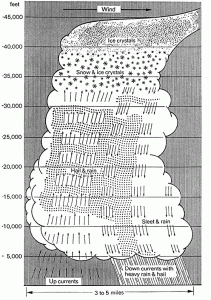 The storm cloud behind the shelf cloud might be very high (1,5 miles up to 14 miles) with strong upwinds. These upwinds are caused when the warm air in the middle of the cloud rushes upwards through the cloud. The cumulonimbus cloud often show up with its characteristic appearance of an anvil. The anvil consists of a veil of ice crystals in the upper part of the cloud, just at the bottom of the tropopause. The upwinds that reach this level is relatively colder than the tropopause, hence the moist air is diffusing laterally. This cold air in turn creates downdraft on the outside of the cloud. The rain and hail in these downdraft bring a lot of air that smashes towards the ground where it is being pushed forward in front of the cloud. This is the strong cold gust that we feel just before a bad weather cloud is coming in. The upwinds in the cumulonimbus clouds can be as strong as 20-30 m/s. They are therefore extremely dangerous to kiteboarders. In other words it´s not a good idea to be out kiteboarding either if you see a shelf cloud or a cumulonimbus cloud. There is a high risk that you get lofted, which happened to the guy from the unbelievable “Top Hat video”.
The storm cloud behind the shelf cloud might be very high (1,5 miles up to 14 miles) with strong upwinds. These upwinds are caused when the warm air in the middle of the cloud rushes upwards through the cloud. The cumulonimbus cloud often show up with its characteristic appearance of an anvil. The anvil consists of a veil of ice crystals in the upper part of the cloud, just at the bottom of the tropopause. The upwinds that reach this level is relatively colder than the tropopause, hence the moist air is diffusing laterally. This cold air in turn creates downdraft on the outside of the cloud. The rain and hail in these downdraft bring a lot of air that smashes towards the ground where it is being pushed forward in front of the cloud. This is the strong cold gust that we feel just before a bad weather cloud is coming in. The upwinds in the cumulonimbus clouds can be as strong as 20-30 m/s. They are therefore extremely dangerous to kiteboarders. In other words it´s not a good idea to be out kiteboarding either if you see a shelf cloud or a cumulonimbus cloud. There is a high risk that you get lofted, which happened to the guy from the unbelievable “Top Hat video”.
Massive cumulonimbus clouds can, if the conditions are right, transform into supercells. Supercells can be described as cumulonimbus clouds with strong rotating updrafts. The rotation occurs when the updrafts are combined with wind shear. The wind shear make the air turn into a huge vertical spiral inside the cloud that is being bended upwards thanks to the updrafts.
If you face a supercell when kiteboarding then you better not just head toward the beach asap, but packing down your stuff and get the hell out of there!
Cape Hatteras Kiteboarding
Ever been thinking of doing a roadtrip through the states? then you might wanna stop by Cape Hatteras in North Carolina. Here is NY kitecenter located (nykitecenter.com) who organize trips to the best kiteboarding spots in the area.
Related External Links
Hatteras 2012 Daniel Koenig and Stefan Koenig
Two for me unknown brothers, Daniel and Stefan Koenig, have shot this video in Cape Hatteras, North Carolina. It’s nice to for once see some innovative kitesurfing, not just the usual unhooked 1080’s ala Aaron Hadlow style :)
